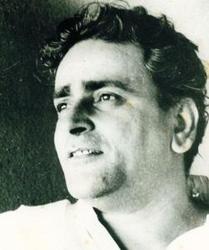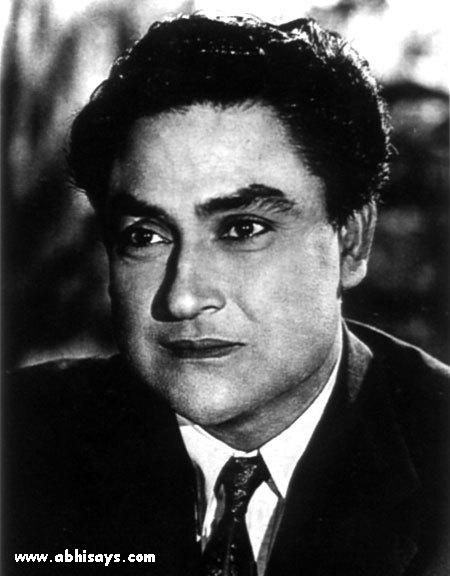 The Hindi Film industry is more than 100 years old. The centre of Hindi Films, Mumbai erstwhile Bombay, got its first exposure to motion pictures when the Lumiere Brothers’ Cinematographe unveiled six soundless short films, on July 7, 1896, at the Watson Hotel in Mumbai. Among the audience for these first shows was a photographer from Maharastra, H.S. Bhatvadekar (more commonly known as Save Dada). He shot two short films in early 1900s and exhibited them under Edison’s projecting kinetoscope. So this was the beginning of the one of the greatest revolutions in the field of entertainment in India. Dadasaheb Phalke got the credit of the production of India’s first fully indigenous silent feature film, Raja Harishchandra, adapted from the Mahabharata. The film was released on May 3, 1913 at the Coronation Cinema in Mumbai. Raja Harishchandra was the foundation stone for the largest film producing industry in the world.
The Hindi Film industry is more than 100 years old. The centre of Hindi Films, Mumbai erstwhile Bombay, got its first exposure to motion pictures when the Lumiere Brothers’ Cinematographe unveiled six soundless short films, on July 7, 1896, at the Watson Hotel in Mumbai. Among the audience for these first shows was a photographer from Maharastra, H.S. Bhatvadekar (more commonly known as Save Dada). He shot two short films in early 1900s and exhibited them under Edison’s projecting kinetoscope. So this was the beginning of the one of the greatest revolutions in the field of entertainment in India. Dadasaheb Phalke got the credit of the production of India’s first fully indigenous silent feature film, Raja Harishchandra, adapted from the Mahabharata. The film was released on May 3, 1913 at the Coronation Cinema in Mumbai. Raja Harishchandra was the foundation stone for the largest film producing industry in the world.
Soon, a good number of silent films were made and Indian cinema started growing at a rapid pace. Meanwhile, Ardeshir Irani recognised the importance of sound in motion pictures and produced Alam Ara, India’s first talking film. Alam Ara was released at the Majestic Cinema in Bombay on 14 March 1931. The movie was so popular that police aid had to be summoned to control the crowds. Then came the golden era of Hindi Cinema, from 1940s to 1960s. This period saw the rise of actors such as K.L. Saigal, Prithviraj Kapoor, Ashok Kumar, Raj Kapoor, Dilip Kumar, Dev Anand and Guru Dutt.
In the first part of “Most Popular Hindi Film actors”, we will focus on top film actors during 30s and 40s.
 1. K.L. Saigal :: He is regarded as the first big star of Hindi Cinema. In a career of fifteen years, Saigal acted in 36 feature films, 28 in Hindi, 7 in Bengali, and 1 in Tamil. He was a gifted singer and good actor. The first film in which Saigal had a role was the film Mohabbat Ke Ansoo, followed by Subah Ka Sitara and Zinda Laash, all released in 1932. However, these films did not do very well. It was in 1933 that his four bhajans for the film Puran Bhagat became big hit. Success followed success and he gave hits like Yahudi Ki Ladki, Chandidas, Rooplekha and Karwan-e-Hayaat. However, his biggest successful film was Devdas, which released in 1935. It established K L Saigal as the biggest star of Hindi Cinema. The movie created history and the image of Saigal as Devdas got imprinted in the minds of millions of fans. The songs of this film, like Baalam Aye Baso More Mann Mein, Dukh Ke Ab Din Beetat Naahin and Piya Bin Nahin Aavat Chain were hummed in all the corners of India.
1. K.L. Saigal :: He is regarded as the first big star of Hindi Cinema. In a career of fifteen years, Saigal acted in 36 feature films, 28 in Hindi, 7 in Bengali, and 1 in Tamil. He was a gifted singer and good actor. The first film in which Saigal had a role was the film Mohabbat Ke Ansoo, followed by Subah Ka Sitara and Zinda Laash, all released in 1932. However, these films did not do very well. It was in 1933 that his four bhajans for the film Puran Bhagat became big hit. Success followed success and he gave hits like Yahudi Ki Ladki, Chandidas, Rooplekha and Karwan-e-Hayaat. However, his biggest successful film was Devdas, which released in 1935. It established K L Saigal as the biggest star of Hindi Cinema. The movie created history and the image of Saigal as Devdas got imprinted in the minds of millions of fans. The songs of this film, like Baalam Aye Baso More Mann Mein, Dukh Ke Ab Din Beetat Naahin and Piya Bin Nahin Aavat Chain were hummed in all the corners of India.
In December 1941, Saigal came to Bombay where he acted and sang in a number of hit films like Bhakta Surdas, Tansen, Bhanwara, Kurukshetra, Omar Khayyam, Tadbeer, Shahjahan and Parwana. The songs which took him to greater heights were: Diya Jalao Jagmag Jagmag (Tansen), Chah Barbaad Karegi (Shahjehan), Gham Diye Mustaqil (Shahjehan), and the immortal Jab Dil Hi Toot Gaya (Shahjehan). You can guess the power and mystique of Saigal’s singing by the fact that singers like Mukesh and Kishore Kumar started their careers singing in the ‘Saigal style’ before etching out their own identities.
 2. Prithviraj Kapoor :: The current generation recognize him as the father of Raj Kapoor and grand-father of Rishi Kapoor. He was the patriarch of the Kapoor family of Hindi films, five generations of which family, beginning with him, have played active roles in Hindi films. He acted in many silent films and did a supporting role in India’s first film talkie, Alam Ara. His performance in Vidyapati (1937) was much appreciated. His best-known performance is perhaps as Alexander the Great in Sohrab Modi’s Sikandar (1941). He was the pioneer of Indian theatre. He founded Prithvi Theatres, a travelling theatre company based in Mumbai, in 1944. He also gave memorable performance as the Mughal emperor Akbar in the movie Mughal E Azam (1960) and his last important performance was the role of stentorian grandfather in Kal Aaj Aur Kal (1971) where he appeared with his son Raj Kapoor and grandson Randhir Kapoor. The Government of India honoured him with the Padma Bhushan in 1969 and the Dadasaheb Phalke Award in 1971 for his contributions towards Hindi Cinema.
2. Prithviraj Kapoor :: The current generation recognize him as the father of Raj Kapoor and grand-father of Rishi Kapoor. He was the patriarch of the Kapoor family of Hindi films, five generations of which family, beginning with him, have played active roles in Hindi films. He acted in many silent films and did a supporting role in India’s first film talkie, Alam Ara. His performance in Vidyapati (1937) was much appreciated. His best-known performance is perhaps as Alexander the Great in Sohrab Modi’s Sikandar (1941). He was the pioneer of Indian theatre. He founded Prithvi Theatres, a travelling theatre company based in Mumbai, in 1944. He also gave memorable performance as the Mughal emperor Akbar in the movie Mughal E Azam (1960) and his last important performance was the role of stentorian grandfather in Kal Aaj Aur Kal (1971) where he appeared with his son Raj Kapoor and grandson Randhir Kapoor. The Government of India honoured him with the Padma Bhushan in 1969 and the Dadasaheb Phalke Award in 1971 for his contributions towards Hindi Cinema.
3. Ashok Kumar :: Ashok kumar (also known as Dadamoni) entered the film industry during the silent era, with his classic bengali looks, charisma and his phenomenal acting talent, Ashok kumar became the face of the 40’s and 50’s. He played meaningful roles in films like Achut Kanya, Bandini etc. He was one of the first anti-heroes of Indian Cinema with his role in Kismet in 1943. This movie went on to create a record for the highest grossing film in India at the time of its release. He started his career in Bombay, almost accidentally, with the Bombay Talkies production Jeevan Naiya in 1936. The male lead, Najam-ul-Hussain, went absconding with the heroine Devika Rani, the director’s wife who returned later on. The director and studio head, Himanshu Rai, in retaliation dismissed the hero and called upon his laboratory assistant Ashok Kumar to take the lead role in the film.

His first major hit was Achut Kanya with Devika Rani in 1936. The success of Achut Kanya established Ashok Kumar in the film industry. After this success, Devika Rani and Ashok Kumar did a string of films including Izzat, Savitri and Nirmala. He also appeared with Leela Chitnis in Kangan, Bandhan and Jhoola After Kismet, his major super-hit film came in 1949 when he co-starred with Madhubala in “Mahal”. In the 1950s, he played the suave cigarette-smoking criminal, lawyer, nawab or police officer in several films. In the late 1960s and early 1970s he switched to character roles playing the parent, grandparent, dirty old man and suave criminal, being careful never to be typecast. In early 1990s, he appeared on television, anchoring the first Indian soap opera Hum Log. When he at the age of 90 died in 2001 the then Prime Minister Atal Bihari Vajpayee described him as “an inspiration… for many generations of aspiring actors.”
